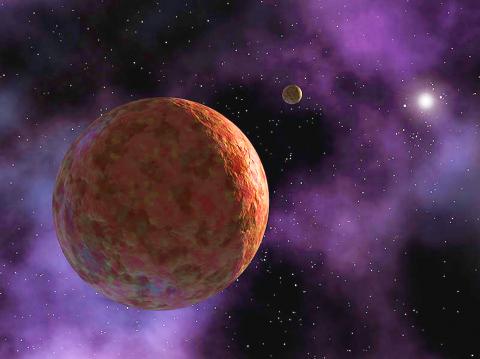I'm always amazed at other people's jobs. What they do for a living.
I read that an American University is looking at how to put a lander on Sedna! Can you imagine. What a job. Just the thought is mind-blowing, never mind taking it further. But that's how the Moon Landings started, just a thought.
Sedna is a dwarf planet that just about manages to be a resident of our Solar System. This restless vessel gets so far out into our system's farthest rim that it becomes a mystery object.
Its likely Sedna comes from the Oort cloud, that ethereal ice-flecked bubble that possibly envelopes our Sun's system's outer reaches beyond our imagination. It really does traverse worlds.
Sedna maybe a dwarf but it packs in the air miles like no other. It has an 12,000 year orbit around our star. Twelve thousand years! Can you imagine how big our system must be to accommodate such ambitious mariners as Sedna.
Alas, from its most distant hangout on the darkest edge, 140 billion kilometres away, the next time this dwarf traveller will be nearest our Sun will be July 2076 and I will be long gone. Even then, Sedna will still be 76 AU away, that's 11 billion kilometres to you and me.
I can't imagine landing on Sedna, even when its that close, but I'm glad someone can!
We spent our childhoods playing with space toys and exploring new worlds but how far out would you want to go readers if you could? Camp on Sedna? Cruise the Oort?



I imagine Sedna will be a pretty gloomy place, as light from the sun will be so diffuse, it would be a cold and dark world. It was interesting to see the latest NASA probe 'Lucy' encounter the asteroid 'Dinkinesh' and discover that it was actually a close binary pair, with a tiny moonlet about 0.5 miles across orbiting the main rock. Lucy sped past at 10k miles an hour on the way to visit the Trojans between Jupiter and Saturn in 2027. Bill
ReplyDeleteIn an alternate life I would've been a space explorer. I'd prefer to have settled down as a space colonist though. And I don't think I'd want to live on Sedna. Maybe Mars, one of the moons of Jupiter, or in the asteroid belt.
ReplyDelete